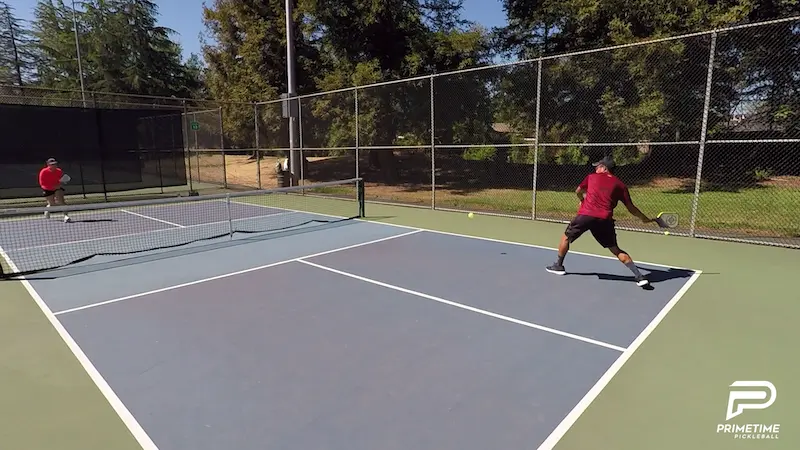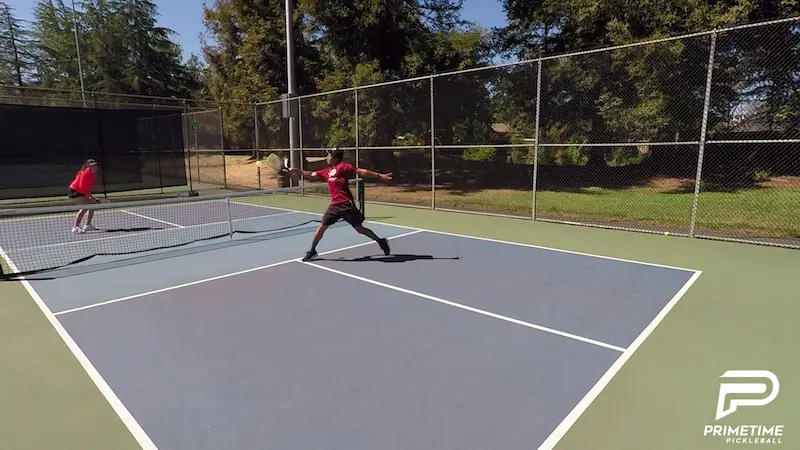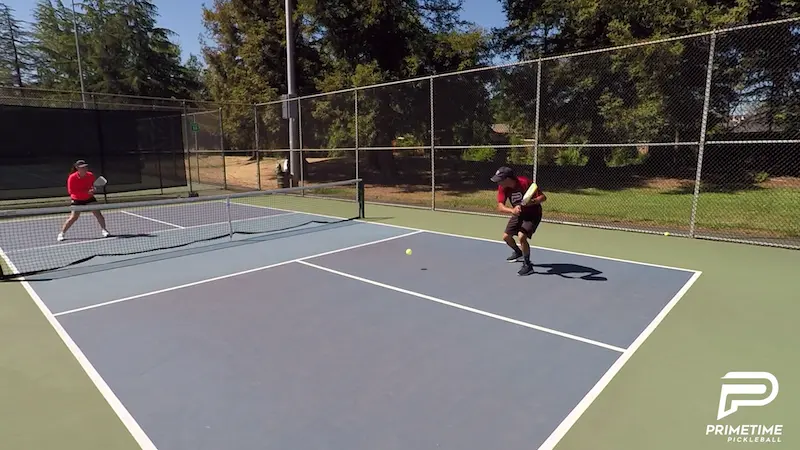In today’s blog we’re going to go over the four different scenarios where you should drive your third shot.
Before we go into these four scenarios, the first thing we want to say is these are not black and white rules. These are just guidelines that you can go by which can put you in the driver’s seat of the point.
Like with anything in pickleball it’s not always a yes-or-no answer. There’s always caveats. But these are good baselines to know when you should drive your third shot.
Scenario #1 – Returner is NOT going to make it up to the the NVZ line before you hit your 3rd shot

The very first scenario in which you should drive your third shot is when you hit a really strong serve and your opponent is going to struggle with that return. They are still in motion as they are making their way up to the non-volley zone after the return.
Okay, so they have not set their feet and they’re still in motion, coming up, this is a really good time to try your best to drive that third shot.
Keep it low and as they’re still moving and they’re going to have to stop in the middle, around the transition area to hit that volley or they’re going to have to hit it while they’re moving.
It’s a tough shot either way.
Scenario #2 – Returner hits a HIGH & SHORT return that you can hit straight through or down on

The second scenario in which you should drive your third ball is really similar to the first that we talked bout.
Let’s say your opponent hits a return that is really high and pretty short. It jus sits there and is ready for you to drive it right at them. Right at their torso or lower is preferred.
It’s going to be really tough for your opponent to handle the pace because they just gave you such an easy ball to attack.
It can really put your mindset in a very offensive position. It’s about being aggressive and not being tentative on your shots.
If you get a really short return this is a good way to really put pressure on the returner.
Scenario #3 – Returner hits a strong SLICE return that cuts well and stays LOW. Hard to get under the ball.

The third scenario in which you should drive your third shot goes like this: you hit a serve and then your opponent has a really good return where they really slice or cut it. Wether it’s their forehand or their backhand it has a lot of spin and it stays low.
On these balls, if somebody returns with a lot of slice and it stays really low it’s going to be pretty hard for you to hit a good third ball into the kitchen because of that slice and it being low. This can sometimes be really hard to deal with.
One thing that you’ll do to make sure you make that ball and get it over is that you’re just going to drive that ball while they’re at the net. As they’re volleying that ball back it’s not going have nearly as much spin as their return did.
You can maybe drop that ball in the fifth shot.
Scenario #4 – You are confident that you can overwhelm them with POWER
The fourth scenario in which you should drive your third shot is if you think that you can defeat their reaction time.
Sometimes, depending on who you’re playing, let’s say the team at the net isn’t as confident with their volleys as you are, maybe you can just get away with driving the ball and winning easy points.
Conclusion
Remember that third shot drive, maybe you can win it right off the bat and they’ll miss that volley to the net, or maybe it just sets up a much easier ball on that fifth shot. Maybe they pop it up and your partner will poach or you’ll get a short weak ball which you can drop the fifth.
Keep those scenarios in mind.
Remember these are just guidelines that you can think about to drive your third shot instead of drop them.